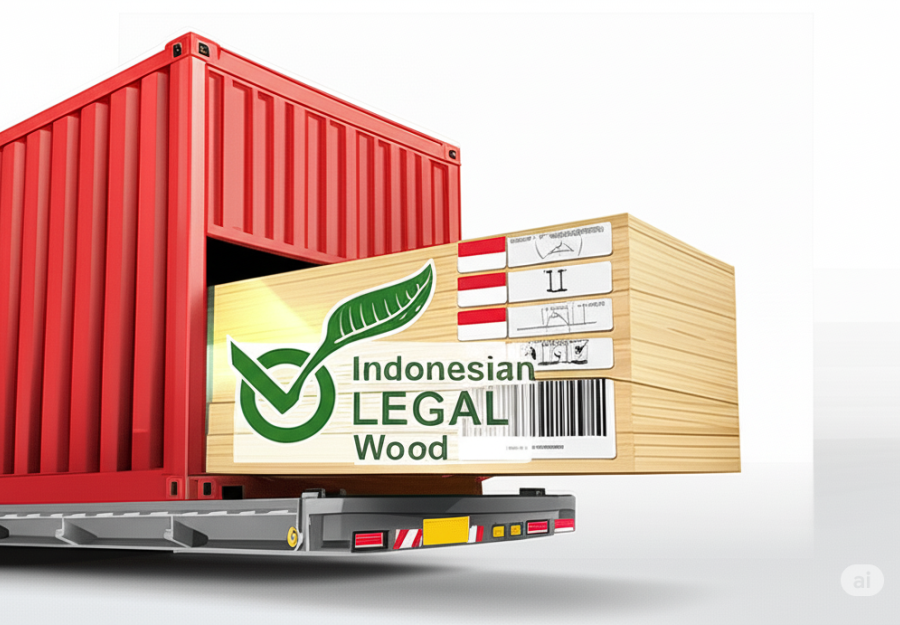Japan Remains a Strategic Plywood Import Market Amid 2025 Supply Fluctuations
Japan Remains a Strategic Plywood Import Market Amid 2025 Supply Fluctuations
- 01 Jul 2025, 11:56
Japan Remains a Strategic Plywood Import Market Amid 2025 Supply Fluctuations
Jakarta, APKINDO News
Japan's plywood import market for the period of January to May 2025 recorded a total volume of 862,086 cubic meters, showing a marginal decline of 1.0% compared to the same period in 2024 (871,189 m³). In May 2025 alone, Japan imported 169,811 m³—slightly lower than April's 186,647 m³—indicating a monthly downward trend that stakeholders need to monitor closely.
Compared to May 2024 (174,177 m³), the May 2025 import volume also fell by 2.5%, suggesting that post-pandemic recovery remains fragile and now hinges largely on quality, dimensional consistency, and sustainability of the plywood supplied by various exporting countries.
During the January–May 2025 period, Indonesia maintained its position as the top plywood supplier to Japan, with a volume of 278,851 m³—albeit posting a slight decrease of 1.3% year-on-year (282,408 m³ in 2024). Malaysia followed closely with 238,369 m³, registering a marginal gain of 0.1%, reflecting stable and resilient supply chains.
China ranked third, exporting 185,911 m³, which represented a significant decline of 11.1% from the previous year. This sharp drop highlights the challenges faced by Chinese exporters amid global carbon regulations, anti-dumping scrutiny, and increasing competition. Vietnam, meanwhile, emerged as the fourth-largest supplier, recording an impressive year-on-year growth of 12.5%, with 150,567 m³ delivered to Japan—up from 133,860 m³ in the same period last year.
Hardwood plywood continues to dominate Japan’s plywood import portfolio. From January to May 2025, this category accounted for approximately 592,760 m³ or nearly 69% of Japan’s total plywood imports—significantly higher than softwood plywood (148,416 m³), laminated veneer lumber (LVL), blockboards, and other miscellaneous products.
Specifically, the 12–24 mm thickness range within the hardwood plywood segment remained the most sought-after product with 330,160 m³, followed by the 6–12 mm segment (156,312 m³) and <3 mm (26,170 m³). In softwood plywood, the 12–24 mm segment dominated with 83,086 m³, indicating strong demand for light construction and non-structural applications.
Vietnam has emerged as a serious contender and may challenge the dominance of Indonesia and Malaysia in the near term. Its growth of 12.5% signals enhanced production efficiency, adherence to sustainability certifications, and improved logistics. If this trend continues, Vietnam could potentially surpass 360,000 m³ annually and overtake China’s position in the medium term.
On the product front, LVL and tongue-and-groove plywood are expected to experience increased demand, driven by Japan’s rising prefabrication and housing renovation needs. The LVL segment alone reached 217,002 m³ in the first five months of 2025—marking a double-digit growth compared to the same period last year.
For Indonesia, maintaining the top spot despite a minor decline should serve as a reminder of increasing Japanese market expectations concerning product quality, legality, and sustainability. Indonesian producers must strengthen compliance with certification schemes (SVLK, FSC, PEFC), diversify product offerings (especially LVL and tongue-and-groove plywood), and consider logistical and packaging improvements to maintain competitiveness.
Overall, Japan remains a strategically vital export destination for plywood-producing countries, particularly those in Southeast Asia. With global supply dynamics shifting, the competition among ASEAN suppliers will intensify, and product differentiation through innovation, compliance, and cost efficiency will be key to sustaining market share. (geo_rob)


